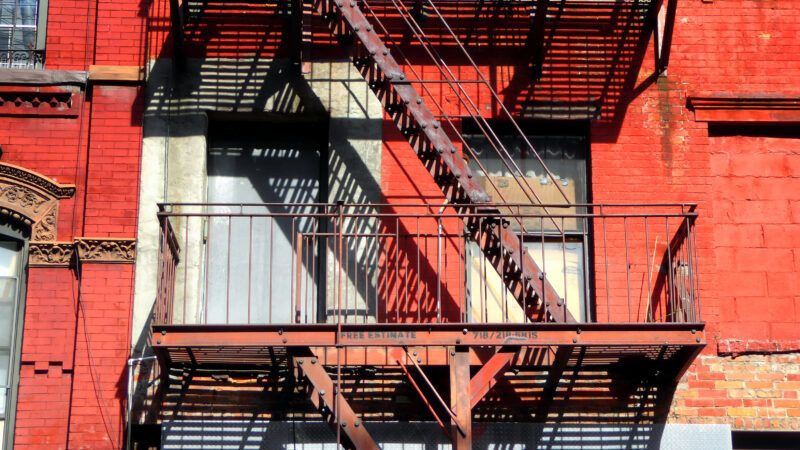New York Cuts Real Rents at Rent-Stabilized Apartments
The city's Rent Guidelines Board approved a nominal 2.75 rent increase for one million rent-stabilized apartments. That's below the year's 3.3 percent inflation rate.

New York City's Rent Guidelines Board (RGB) voted to cut rents at rent-stabilized apartments yet again, although you might not know that from the press coverage.
Earlier this week, the RGB—a city regulator responsible for setting maximum legal rent increases on the city's roughly one million rent-stabilized units—voted to allow rent increases of 2.75 percent for one-year leases and 5.25 percent for two-year leases.
Nominally, that is a rent increase. When compared against the year's 3.3 percent inflation, as measured by the Consumer Price Index (CPI), that's a real decrease in rents.
According to a recent city-conducted housing survey, rents at rent-stabilized apartments have fallen by 3 percent in real terms from 2021 to 2023.
Nevertheless, media outlets covering the board's decision have framed this as an egregious rent hike.
"Your rent is going up," said Curbed in a headline of an article that suggested New York City's RGB follow the example of Kingston, New York's rent board, which had voted for a nominal 15 percent cut in rents in 2022. (A state appellate court ruled against landlords challenging that rent cut earlier this year.)
"People are going to be homeless because of this. People aren't going to be able to pay for medication because of this," said Adán Soltren, a tenant representative on the nine-member RGB.
That seems unlikely given the actual level of nominal rent increases being allowed. The median rent-stabilized apartment goes for $1,500 a month, meaning a 2.75 percent increase works out to a $41 monthly rent increase.
While rent-stabilized tenants' incomes are lower on average than those in market-rate apartments, New York's rent-stabilization program has no means-testing. Many of the program's beneficiaries are themselves wealthy owners of second homes in the Hamptons, as Reason has recently covered.
Rents can and do fall in freer markets where ample new construction is allowed. Developers make money building new housing, putting downward pressure on existing units. Landlords of older buildings charge what they can get. If that falls below a reasonable rate of return, they too can redevelop their building into higher-quality housing.
Under New York City's regulatory regime, most new construction is foreclosed by zoning laws, pushing market rents up. Rent stabilization holds rents well below market rates at rent-regulated properties, which are also protected from redevelopment.
Instead of supply increases pushing prices down, price controls push quality down, and scare away scarce capital into other markets where reasonable returns can still be made.
The owners of New York's rent-stabilized buildings complain that persistent real rent cuts are "defunding" their buildings. Amendments to New York's rent stabilization law in 2019 largely eliminated landlords' ability to deregulate their units or raise rents to cover the costs of renovations and capital improvements.
That leaves the RGB-approved rent increases as the only way for landlords to raise revenue for operating their buildings. The value of rent-stabilized buildings has collapsed since 2019, causing financial turmoil for banks that lent heavily to New York's multifamily industry.
The new generation of rent control policies adopted by states like California, Oregon, and even New York (which approved a "good cause eviction" policy covering some non-rent-stabilized housing earlier this year) allow for landlords to raise rents by a set percentage plus inflation.
The logic there is that landlords get paid in dollars, and when the value of the dollar is falling (and prices rising), larger allowable increases are necessary to offset a system that would otherwise mandate falling real rents.
New York's decades-old rent stabilization system makes no such allowances. Instead, the RGB has effective carte blanche to set prices on nearly one million apartments citywide.
The result is a rent-stabilized housing stock increasingly starved of revenue and capital, and tenant advocates who grandstand on whatever rent increases are allowed (even when they're actually rent cuts).
Rent Free is a weekly newsletter from Christian Britschgi on urbanism and the fight for less regulation, more housing, more property rights, and more freedom in America's cities.
Show Comments (8)